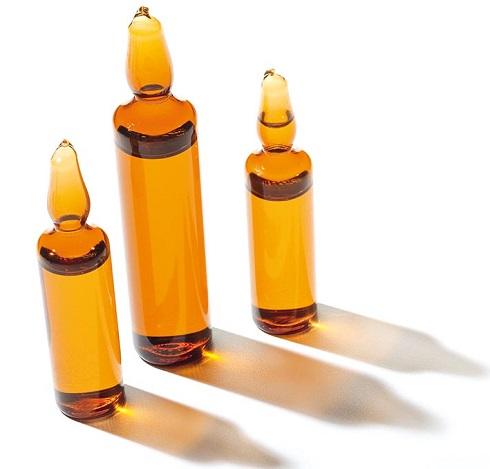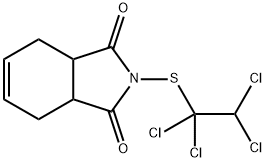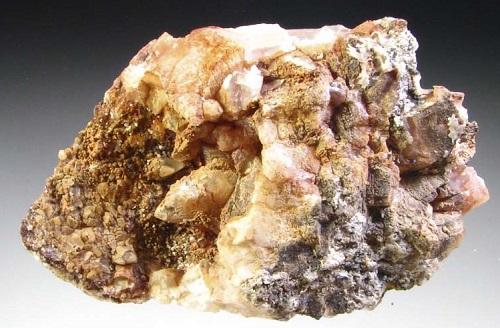Use of Captafol
Captafol is colorless to pale yellow in color with a distinct odor. It has a molecular weight of 349.1, water solubility of 1.4 mg L-1at 20°C, and melting point of 160–162°C. Some common trade names of products containing captafol include Crisfolatan, Difolatan, Difosan, Folcid, Haipen, Kenofol, Pillar-tan, and Sanspor. Captafol is a nonsystemic antifungal chemical extensively used to control foliage and fruit diseases of tomatoes, coffee berry disease, potato blight, and tapping panel disease of rubber trees. Both the lumber and timber industries have used this compound for years to prevent growth of wood rot fungi in logs and wood products.

Use
Captafol is a widely used broad-spectrum contact fungicide belonging to the class of sulfanilamides. It is effective for the control of a wide variety of fungal diseases in plants and is widely used outside the United States to control foliage and fruit diseases on apples, citrus, tomato, cranberry, sweet corn, barley, wheat, and several other plants. Captafol is also extensively used as a seed protectant in cotton, peanuts, and rice. It is also used to reduce losses from wood rot fungi in logs and wood products. Mixed formulations of this compound include (captafol þ) triadimefon; ethirimol; folpet; halacrinate; propiconazole; and pyrazophos. Captafol is compatible with most plant-protection products, with the exception of alkaline preparations and formulating materials.
Toxicity
Captafol was shown to be hepatotoxic and to induce potentially preneoplastic glutathione S-transferase placental form positive (GST-P+) foci in the liver of male F344 rats in both the initiation and promotion phases of studies of tumor development. In addition, promotion with captafol increased the incidences of hyperplasia of the forestomach and adenoma of the small intestine, thyroid follicular-cell adenoma, and the expression of a marker of cell proliferation (proliferating-cell nuclear antigen) in the kidneys in F344 rats. In addition to direct genotoxic activity, several epigenetic mechanisms depleted cellular thiol groups (nonprotein and protein), inhibited DNA replication enzymes (DNA topoisomerases and polymerases), DNA synthesis, RNA synthesis, and induced CYPP450 mono-oxygenases, suggesting underlying causes of pathogenesis of tumor formation.
Environmental Fate
Captafol is not persistent in the environment. Captafol is stable under ordinary environmental conditions and rapidly degrades in soil, the rate of degradation being a function of soil type and pesticide concentration. It does not leach from basic soils and is unlikely to contaminate groundwater. Captafol sprayed on most crops has a half-life of less than 5 days. Captafol and/or its metabolites and degradation products are readily absorbed by roots and shoots of plants. If released to air, an extrapolated vapor pressure of 8.27×10-9 mm Hg at 25°C indicates captafol will exist solely in the particulate phase in the ambient atmosphere. Particulate-phase captafol will be removed from the atmosphere by wet and dry deposition.
If released to soil, captafol is expected to have slight mobility based on Koc values of 2073 and 2120. Volatilization from moist soil surfaces is not expected to be an important fate process based on a Henry’s Law constant of 2.7×10-9 atm-cu m mol-1. In a laboratory setting, the biodegradation half-life of captafol in three soils was found in the range of 23–55 days. The overall half-life of captafol in soil is about 11 days, independent of soil type or initial concentration. If released into water, captafol is expected to adsorb to suspended solids and sediment based on the Koc. Volatilization from water surfaces is not expected to be an important fate process based on this compound’s estimated Henry’s Law constant. An estimated bioconcentration factor of 170 suggests the potential for bioconcentration in aquatic organisms is high, provided the compound is not altered physically or chemically after being released to the environment. The half-lives for the hydrolysis of Difolatan at pH 3.0, 7.0, and 8.0 were 77.8, 6.54, and 0.72 h, respectively. Hydrolysis is likely to be the predominant pathway of degradation in the aquatic environment.

